Estimated reading time: 8 minutes
Fruit trees are an excellent investment for your homestead, prep-stead, or food forest. Once established, fruit trees will provide food for you and your family year after year with little effort on your part. But if you live in the desert where it is hot and dry, you might have a challenge trying to grow fruit.
However, with the right varieties and a little knowledge, you can grow plenty of fruit trees in the desert. Here are ten fruit trees that you can grow in the desert.
Want to save this post for later? Click Here to Pin It On Pinterest!
1. Fig Trees
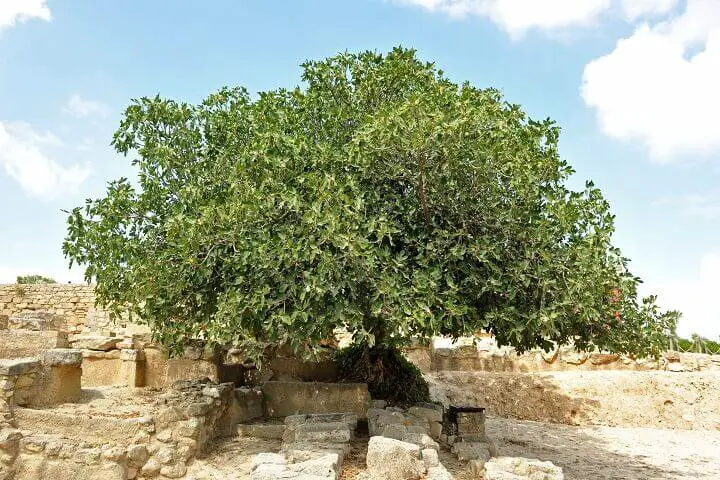
One of the easiest fruit trees to grow in the desert is fig trees, and they are great for beginner and advanced gardeners alike. The fig, as we think of it as not technically a fruit but an inverted flower. The flower blooms inside the pod and then matures into the fruit, known as achene. Each pod is made up of multiple achenes. It takes three to four years for fig trees to begin producing, but they will provide you with a large supply of deliciously sweet figs once they do.
Fig trees grow up to 25 feet high with a spread of ten to thirty feet. They also require eight to ten hours of full sun each day. While fig trees can do well in many soil types, they do prefer soil that drains well. When it is very hot, they may need to be watered every three to five days.
2. Apricot Trees
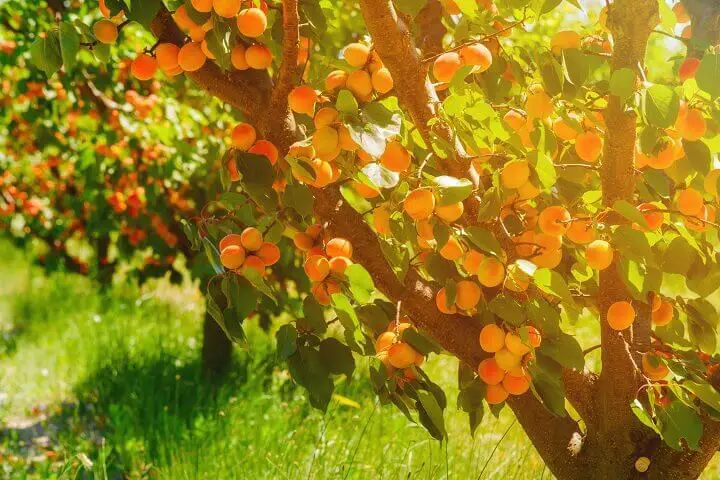
Apricots are large trees that grow over fifteen feet high and fifteen feet wide. Since these fruit trees are self-pollinating, you only need one tree to bear fruit. They do best in dry climates and will thrive even in clay soils.
For the best results, you'll want to spray preventively for insects and diseases and thin the tree as the fruit comes in. However, this small amount of maintenance is well worth it for the beautiful blooms and sweet fruits.
3. Plum Trees
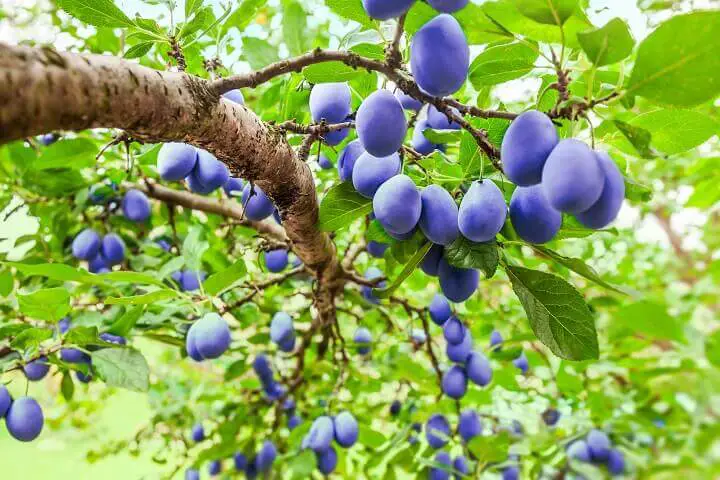
Plums are stone fruits in the member of the Prunus family, which are related to roses. These trees can reach 10 to 15 feet in height. They need a cold winter chill period to produce lots of fruit. Choose a self-pollinating variety such as Beauty or Santa Rosa, which also thrive in hot, dry climates.
Plum trees need to be pruned every spring to keep producing well.
4. Peach Trees
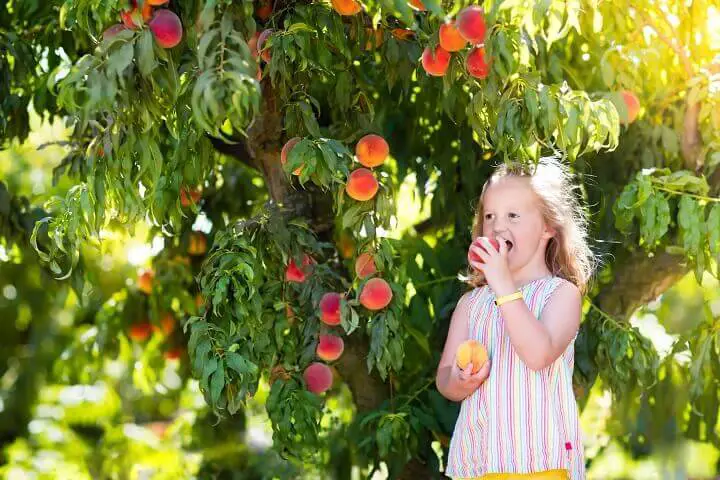
Peach trees can grow up to 25 feet tall, but these delightful fruit trees can be heavily pruned to keep them under 12 feet. Heavy pruning makes it easier to reach and harvest their fruit. It takes three to four years for peach trees to begin bearing fruit. When planting, you can mix several different varieties together in the same hole if you like.
Look for varieties that grow well in hot, dry climates, such as Desert Gold, Rio Grande, and Bonita.
5. Nectarine Trees
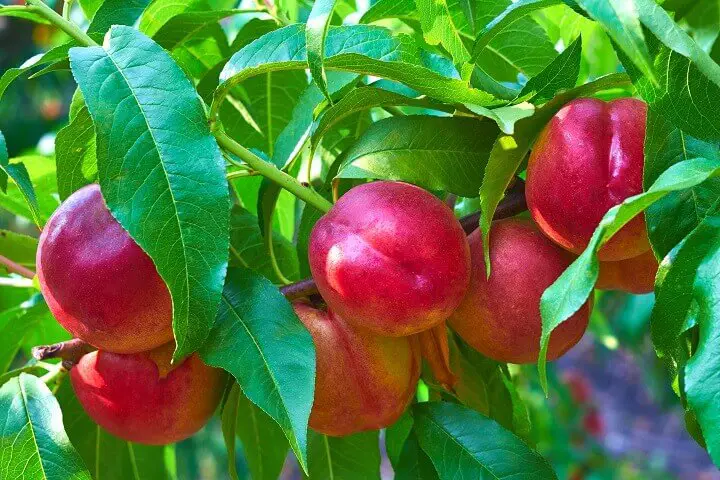
Although nectarine trees can grow up to 25 feet high and 25 feet wide, you'll want to prune these trees heavily each year. It doesn't hurt to keep their size under twelve feet. Nectarine fruits only grow on first-year growth, but heavy pruning will give you plentiful harvests every year. You'll want to look for low-chill varieties that are self-pollinating, such as ‘Goldmine,' ‘Gower,' ‘Stanwick,' and ‘Le Grand.'
6. Apple Trees
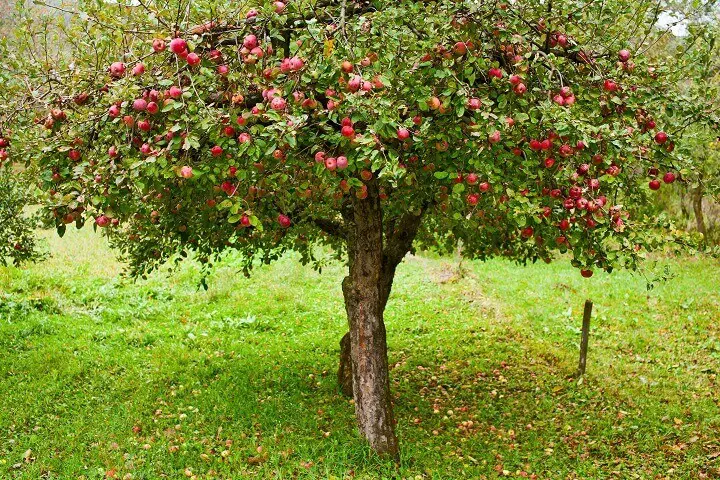
It may be surprising, but you can grow apple trees in the desert. However, the fruit might not be quite as appealing to the eye as apples from the store, but they'll but just as tasty.
Most apple trees need a winter chilling period to bear enough fruit, but a few do better with warmer winters. You can plant Pink Lady, Anna, and Dorsett Golden if you live in the high desert with warmer winters.
7. Pomegranate Trees

These beautiful trees produce crimson flowers and golden fall foliage, making them a beautiful addition to any garden. The sweet fruit is one of the oldest known fruits. These deciduous trees can grow anywhere from twelve to twenty feet high, but some people will prune them heavily, giving them more of a bush shape. If your winters are freezing, you can plant dwarf varieties to grow in containers.
They do not need a lot of watering and will thrive in all-day sun. Pomegranates prefer alkaline soil. Look for varieties such as Wonderful for desert growing.
8. Quince Trees
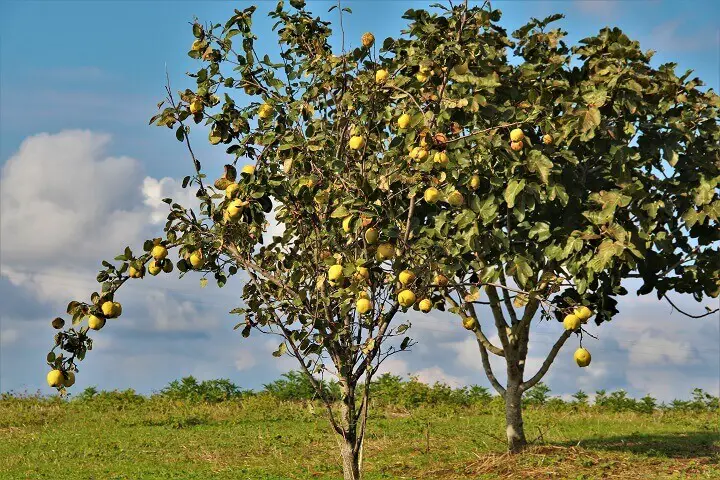
Quince trees are easy to grow, even in desert conditions, because they are very adaptable to wet or dry soils. For best pollination, you'll need two quince trees planted near each other.
Ornamental or flowering varieties produce fruit that is too tart to eat. Early cultivars could only be eaten cooked in jams or jellies because they are so hard. However, there are modern varieties that have been bred for fresh eating, such as Orange. Cook's Jumbo is excellent for jams and jellies because it is packed full of pectin.
9. Citrus Trees

It can be a bit extra challenging to grow citrus trees in the desert, but it can be done. Kumquats, mandarins, and grapefruit are the hardiest citrus trees. They'll be the easiest to grow in the desert climate. You could also grow lemons, limes, and even oranges.
Choose your citrus tree depending on your environment. If you live in the low desert with cooler winter temperatures, you might want to stick to frost-hardy grapefruits. However, if you are in the high desert with more mild winters, you could try lemons and limes. If all else fails, you can grow dwarf varieties of any of these trees and bring them inside when it gets too cold.
If you do plant your citrus trees outside, make sure to mulch around the tree's base. Water them deeply, then allow the soil to dry out before you water them again.
10. Cherry Trees
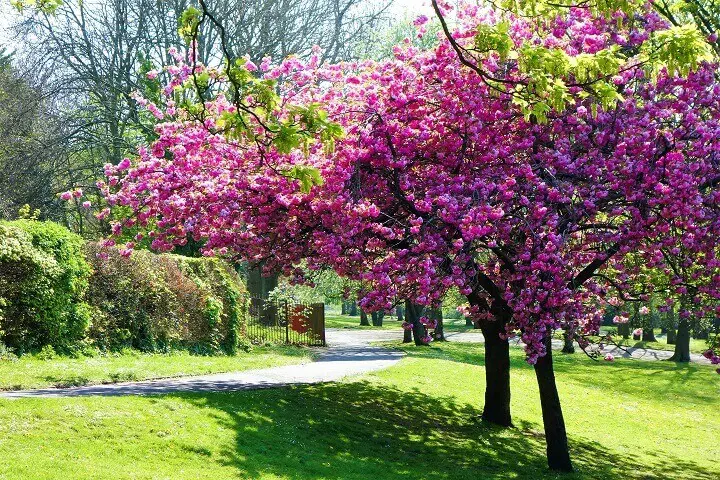
You can plant cherry trees in the desert, and they will survive and produce fruit. However, they won't thrive like other types of fruit trees. You'll need at least two cherry trees to produce fruit.
Cherry trees can be pruned from late spring to early summer to provide aeration, access to sunlight, and easy harvesting of cherries.
Tips for Growing Fruit Trees in the Desert
One of the most important considerations for growing fruit trees in the desert is to pick the cultivar that suits your particular climate. The high desert tends to have milder winters while the low desert tends to have colder winters, but most fruit trees have cultivars for both.
Self-pollinating varieties will only require one tree to produce fruit, but many types will require more than one tree to cross-pollinate. If you don't have more than one, they might flower, but they won't produce fruit.
If water is an issue, you can conserve water by mulching around the tree. Mulching the tree will protect the roots from cold weather, as well.
Like this post? Don't Forget to Pin It On Pinterest!

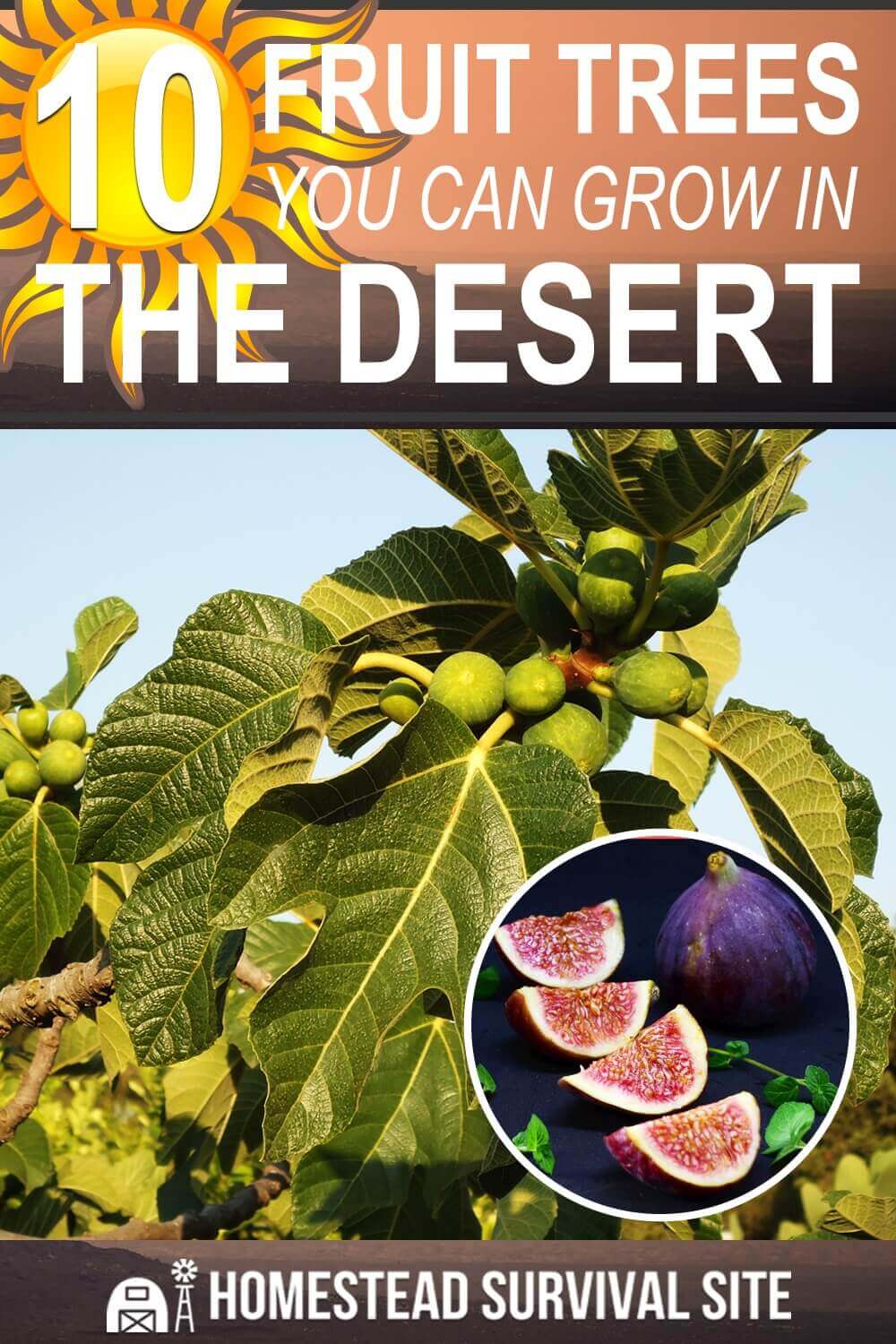


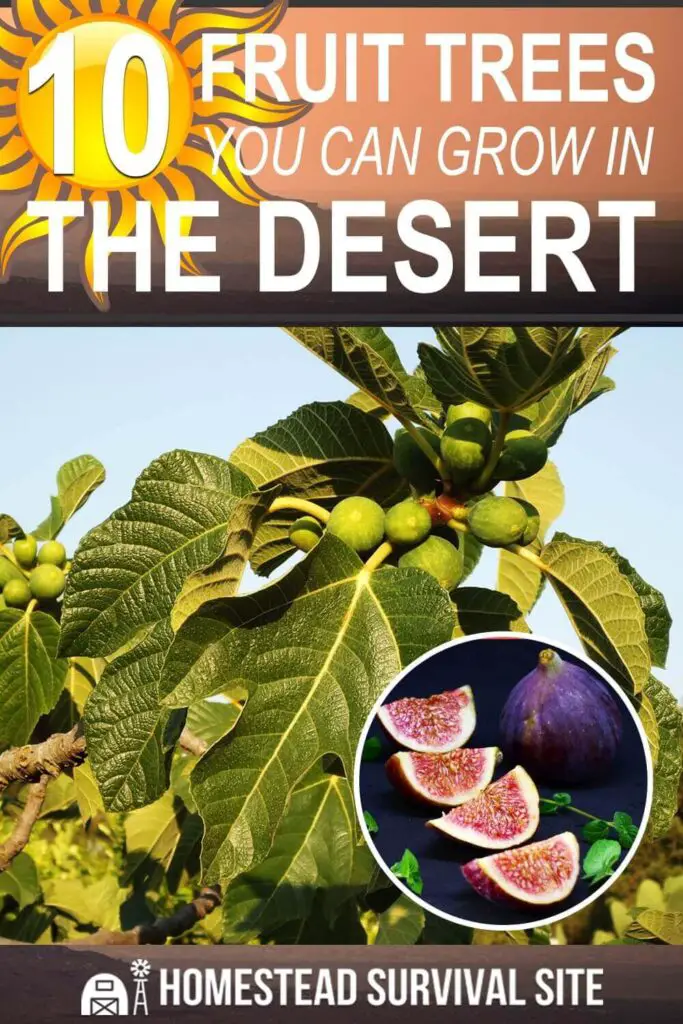


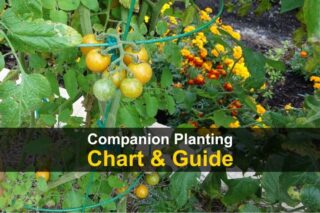
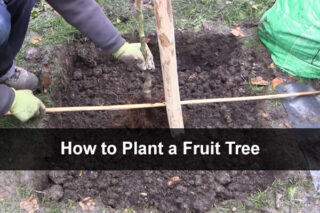


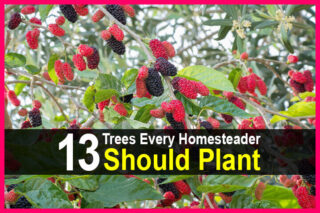

I believe you have low and high desert confused. Low desert may or may not even see a frost. High desert can very easily experience temperatures of minus 10 degrees.
clergylady, I’m glad to see you on this site. I’m sure you will provide your honest, factual, and practical wisdom as you do on the prepper site..